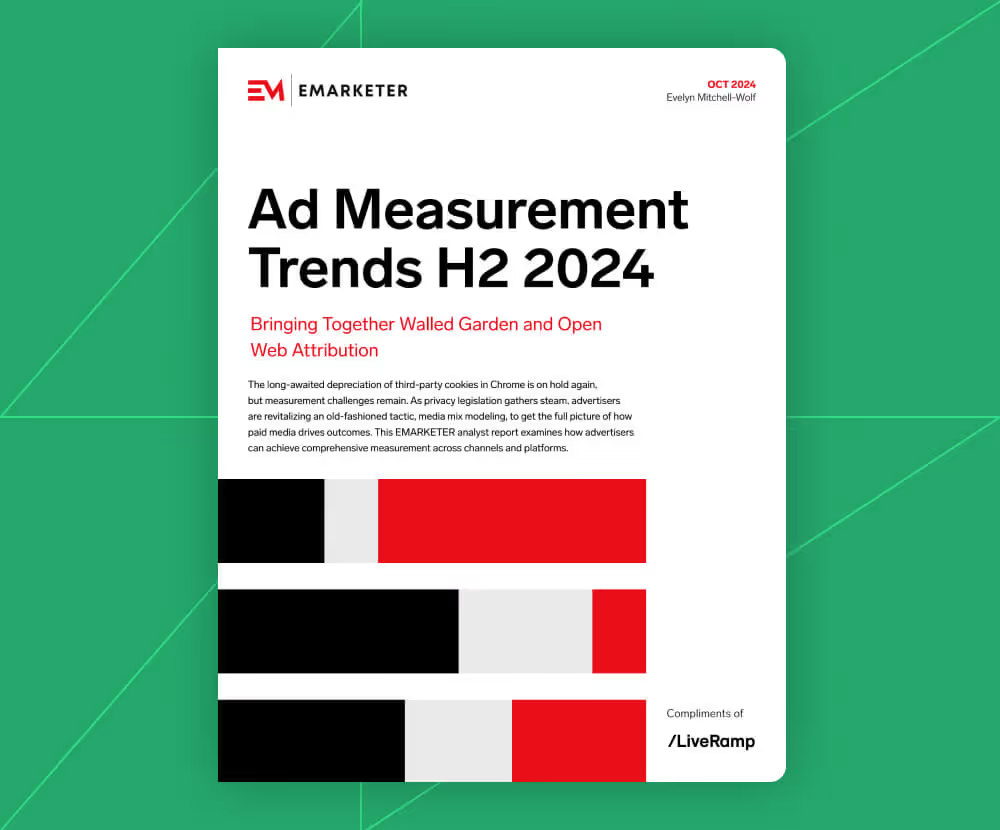Measurement: How to Prove Marketing ROI
How to prove advertising value across every channel and touchpoint
You have more opportunities than ever before to connect with customers and measure marketing success.
In this episode of “Here’s the deal…” Chelsea Heredia, Principal Product Marketing Manager at LiveRamp, shares an insider’s perspective on three key elements for accurate cross-channel ad measurement – and how data collaboration can help advertisers avoid wasting media dollars.
“Regardless of how familiar you are with measurement, data collaboration is a great first step to making confident data-driven decisions and holding all of your media investments accountable,” Chelsea said.
Watch now to learn how to measure and optimize campaigns (everywhere) for maximum marketing value.
Transcript
Today, marketers have more and more advertising options than ever before. And with that, measurement is more and more critical to hold all of your advertising dollars accountable. I’m Chelsea Heredia, a PMM at LiveRamp, and here’s the deal.
Studies suggest that one in four media dollars is considered wasted. They’re not reaching your goals or expectations.
And so measurement is a way for you to hold all of your media investments accountable and actually reaching the goals that you expect. We often see three common categories or types of measurement, media delivery, media effectiveness, and audience analytics.
Media delivery, the metrics behind that are things like reach, frequency, and impressions. But really, it’s just understanding how your media dollars are reaching your target audience and and delivering. Media effectiveness is essentially connecting exposure to outcome. It allows you to understand whether or not it drives mid or lower funnel goals, like after seeing an ad.
Does someone recognize your logo or visit your website or purchase in your store? The third category and perhaps the broadest is audience analytics. You can understand what your audiences are watching or pinpoint new demographics or people that you might not previously be reaching or targeting. Now across the three measurement categories, there is a big challenge, and that is fragmentation.
There’s data fragmentation, so different touch points, data that you might have like CRM data and connecting that to exposure data, for instance, or additional demographic data.
Then there’s additional privacy and legislation, issues causing additional fragmentation.
And even if you get access to those varying datasets, it’s really difficult to connect across different identities.
All that to say, across in order to connect the dots and and handle this fragmentation, you need a data collaboration partner.
This partner can help you establish an identity framework and get all your data points on one kind of universal identity in order to connect the dots across all those different touch points.
And, ideally, this data collaboration partner can help you measure any way that you want. Regardless of how familiar you are with measurement, data collaboration is a great first step to start making confident data driven decisions and and holding all of your media investments accountable.
You have more opportunities than ever before to connect with customers and measure marketing success.
In this episode of “Here’s the deal…” Chelsea Heredia, Principal Product Marketing Manager at LiveRamp, shares an insider’s perspective on three key elements for accurate cross-channel ad measurement – and how data collaboration can help advertisers avoid wasting media dollars.
“Regardless of how familiar you are with measurement, data collaboration is a great first step to making confident data-driven decisions and holding all of your media investments accountable,” Chelsea said.
Watch now to learn how to measure and optimize campaigns (everywhere) for maximum marketing value.

